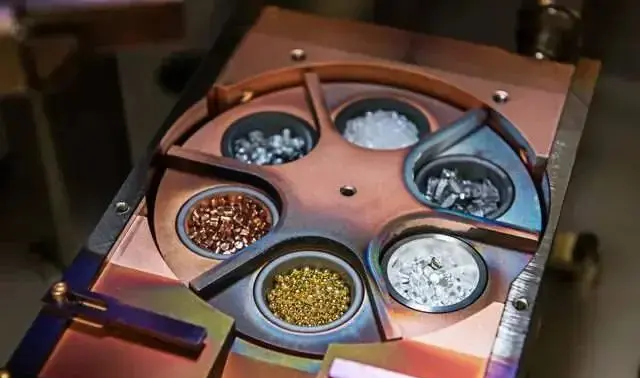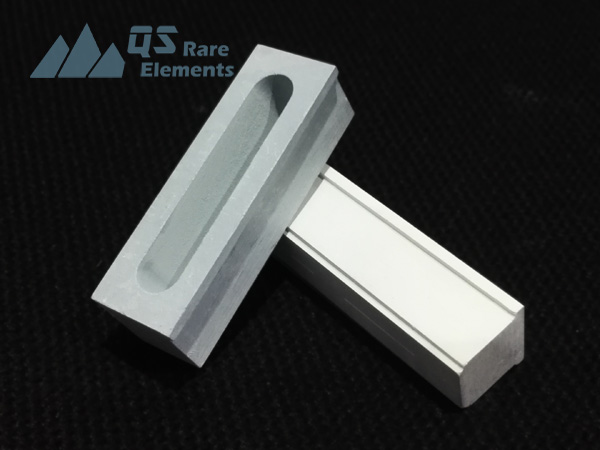Types of Evaporative Sources Used in Thin Film Fabrication
Thin-film deposition actively creates and applies thin coatings onto substrate materials. Manufacturers leverage this process to produce diverse products including solid-state devices, optoelectronics, and medical implants. Specifically, engineers use thin-film deposition to create LED displays, semiconductor lasers, fiber lasers, optical filters, and compound semiconductors. Additionally, the method enables fabrication of medical implants and devices. In summary, thin-film deposition is a vital fabrication technique that empowers the production of many essential high-tech components and products. Companies harness this versatile process across industries like electronics, photonics, renewable energy, and medicine.
Thin-film depositions utilize diverse coating materials like metals and oxides. Engineers actively select specific thin films to improve substrate qualities and performance. For example, some thin films are leveraged for optical transparency. Additionally, durable thin film coatings resist wear and abrasion. Other thin films modify conductivity or signal transmission of the substrate. Furthermore, thin films enable precise control over characteristics like magnetism, hardness, and corrosion resistance. In summary, the wide range of achievable properties allow manufacturers to customize thin film coatings. By actively applying thin films, engineers can enhance substrates with exactly the combination of qualities needed for a given application. This flexibility and customization empowers thin film deposition’s use fabricating so many vital products.

Defining the Evaporation Source in Thin Films
Engineers leverage evaporation as a thin-film deposition technique across various applications. Specifically, the deposition source material is evaporated in a high-vacuum environment. Within the vacuum chamber, the vaporized particles can freely traverse to the target substrate without collisions. Upon reaching the substrate surface, the evaporated material condenses back into a solid thin film coating.
Industrially, manufacturers actively utilize evaporation deposition to enable critical fabrication processes. For microfabrication of electronics, engineers rely on evaporation to deposit precise thin films during semiconductor production. Additionally, evaporation allows large-scale manufacture of metalized plastic films and foils.
In summary, the controlled nature of evaporation makes it a versatile thin film deposition method. Operators can finely tune deposition parameters to achieve customized coatings. This flexibility and precision is crucial for industrial fabrication of microelectronics, plasmonics, and optical coatings. Undoubtedly, evaporation empowers the scalable, high-performance production of many modern technologies.
Core Concept in Action
Two basic principles define the evaporation process in thin-film deposition:
Evaporation
The evaporation process for thin films mirrors water molecule evaporation and condensation on surfaces. However, engineers specially design vacuum chambers and heat sources for controlled deposition. Specifically, the source material is evaporated in a high vacuum environment, removing contaminant vapors. This preserves the integrity of the deposition material as it traverses to the substrate. Additionally, operators actively heat the material, increasing the evaporation rate for faster deposition. Upon reaching the substrate, the evaporated particles immediately condense into the thin film coating, enabled by precise temperature controls. In summary, customized vacuum chambers and heating mechanisms allow selective evaporation of the source and rapid deposition onto the engineered substrate. This level of control is essential for fabricating high-purity, uniform thin films on an industrial scale.
The vacuum environment enables direct travel of evaporated particles to the deposition target without gas collisions. This unobstructed path preserves the purity of the deposited material. However, hot objects like heating filaments introduce contaminant vapors that can compromise vacuum integrity. Therefore, engineers thoughtfully position and isolate the evaporation source to minimize background interference. Additionally, advanced vacuum pumps actively remove stray gases to uphold chamber purity. In summary, a pristine high-vacuum environment is crucial for evaporation deposition. Careful chamber design and vapor mitigation allow thin film coatings of exceptional quality and performance.
Specifically, evaporated atoms can react with foreign particles if collisions occur in the vacuum chamber. These interactions reduce the vapor amount reaching the substrate, complicating thickness control. Therefore, engineers optimize vacuum pressure and source isolation to mitigate contaminants. This preserves the composition of evaporated atoms traveling to the substrate. In summary, upholding chamber purity enables precise calibration of deposition thickness and uniform coatings.
To achieve high-quality depositions, engineers must perform evaporation in a robust vacuum or near atmospheric pressure. Improper vacuum levels yield non-uniform, uneven coatings. Optimized vacuum environments empower smooth, consistent thin film deposition. Therefore, precise vacuum controls are essential for fabricating coatings with superior performance. In summary, careful pressure tuning enables uniform, defect-free thin films via evaporation.
ThermalSource
The heat source actively generates thermal energy to evaporate deposition materials, playing a vital role in thin film fabrication. Along with vacuum pumps, evaporation systems integrate specialized evaporation sources suited for thin film growth. Thermal evaporation utilizes resisters or high-current filaments to heat materials. Electron beam evaporation leverages focused electron beams to induce evaporation. Crucially, operators select and tune the evaporation source to achieve controlled material deposition. In summary, the evaporation source directly determines deposition rate, efficiency, and thin film quality. By optimizing thermal, electron, or other energetic inputs, manufacturers realize precision coatings for electronics, optics, and more.
With thermal evaporation, the deposition material is actively fed into heated boats made of semimetals or ceramics. Engineers use metals in wire, pellet, or shot form to optimize evaporation efficiency. Specifically, applied thermal energy melts the metal into a pooled liquid within the boat cavity. This molten material rapidly evaporates due to localized resistive heating, forming a vapor cloud above the boat. Additionally, operators precisely control boat temperature to achieve the desired evaporation rate. In summary, specialized thermal boats localize heating to the deposition material, enabling efficient and controllable evaporation crucial for high-quality thin film growth. Their simplicity also allows easy material replenishment for high-volume manufacturing applications.
Engineers can alternatively use heated crucibles for evaporation. Additionally, electron beams and flash heating represent other energy sources that induce evaporation. In summary, multiple methodologies exist to evaporate materials for thin film deposition.
Overview of Evaporation Methods for Deposition
Materials for making evaporation sources often have a high melting point, and low vapor pressure.
1.FilamentEvaporation
In filament evaporation, engineers actively position metal sources on resistive wires made of tungsten, molybdenum, quartz or graphite. Within the vacuum chamber, high currents heat the filaments above the metal's melting point. This localized resistive heating evaporates the molten source material for deposition. In summary, filament evaporation provides direct, controllable thermal energy for evaporating metals in thin film growth.
2.CrucibleEvaporation
In crucible evaporation, the source material is placed in a high-temperature crucible made of alumina, ceramic, or boron nitride. Engineers then radiatively heat the crucible using an electric filament. Additionally, manufacturers optimize crucible design based on the evaporated material. For example, inert crucibles prevent contamination of reactive sources. In summary, crucible evaporation localizes heating while thermally isolating the deposition material. This enables excellent evaporation control and material versatility for thin film fabrication.
3. Evaporation Boat
Evaporation boats made of tungsten, molybdenum, or tantalum are ideal thermal sources for vacuum deposition. Engineers fabricate boats using boron nitride, titanium diboride, and aluminum nitride powders. For example, three-component boats leverage all three materials for optimal performance. Alternatively, two-component boats combine BN and TiB2. In summary, boats enable excellent control over deposition rate and coating uniformity. Their high melting point and thermal conductivity localize heating to the source material. This makes boat evaporation a preferred thermal technique for precision thin film fabrication.

4. Basket Heaters
Basket heaters enable direct loading of the evaporation source without a crucible. Engineers actively select source materials that closely match the composition of the target substrate. This promotes uniform coatings with minimal interfacial stresses. In summary, basket heaters provide versatility and customizability for thin film deposition. Their crucible-free design allows rapid material changes while ensuring excellent coating adhesion.
